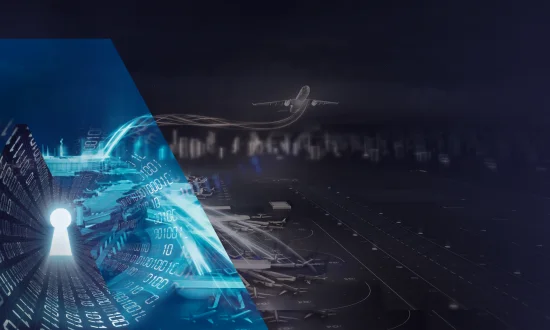T he passenger aircraft had taken off from Toyko and was in flight to London when the flight crew suddenly received instructions to change course. That seemed suspicious; the new route was considerably longer. And indeed it turned out to be a cyberattack on exchanges from the control tower, falsely directing the pilot to shift course.
Fortunately, this kind of nightmare scenario hasn’t yet happened. But the advent of the latest-generation “e-enabled” aircraft has made it increasingly possible.
While Flight crews have been connected for a long time, and but with more aircraft operations e-connected, today passengers want easy access to content in flight, prompting even more connectivity. With aircraft projected to generate nearly 100 million terabytes of data by 2026, the challenge is to secure data transfers between ground and aircraft.
From the theft of passenger information to denial-of-service or ransomware attacks or even the destruction of air transport infrastructure, cyber-attacks can be targeted at any of the links in the chain and can have a major impact on operations. Fortunately, Thales is there to minimise the risk.
Shielding aircraft from the heightened risk of cyberattack
Thanks to its expertise in all segments of air transport – aircraft, airlines, airports, Air Navigation Service Providers, and satellites – Thales offers end-to-end cyber solutions to the air transport sector, from risk assessment to crisis management. They include tailored solutions for specific domains such as communications, radar, air traffic management, IFE, and avionics, as well as preventive maintenance, security supervision incorporating specific threat intelligence, and rapid response teams in case of an attack.
Using the “Cybersecurity by design” principle1, Nathalie Feyt adds that, Thales offers protection on three levels: threat intelligence to identify threats and take preventive action, business continuity in case of an attack, and securing passenger trust. In addition, “Thales has a role to play as a key player in aviation to unite all stakeholders, such as aircraft manufacturers, airlines, airport operators and air navigation services, in identifying and sharing the risks.,” she says.
The connected IT architectures of these new aircraft leverage the power of digital information and communications systems to help flight crews operate more efficiently, optimise maintenance operations, and boost airline revenues.













